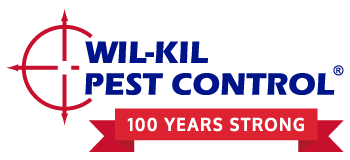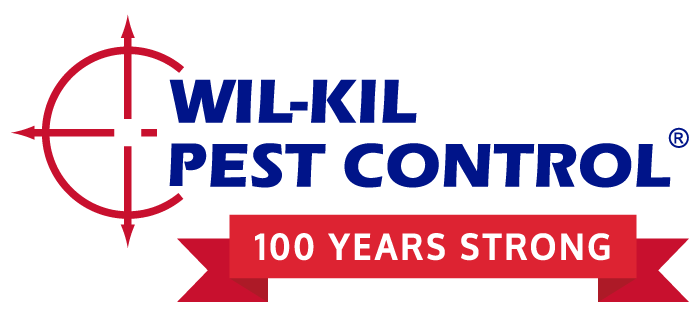By Shane McCoy
Food Safety Magazine
April 24th, 2013
In January, the U.S. Food and Drug Administration (FDA) unveiled its Preventative Controls for Human Food Regulation as part of the Food Safety Modernization Act (FSMA). This rule aims to make food processing even safer. Shifting the food safety focus from response to prevention, this rule focusses on increased documentation, accountability and corrective actions, and puts a facility’s pest management plan in greater focus.
Although it is uncertain when the new rule will go into effect, it is important that facilities begin aligning their sanitation, housekeeping, maintenance, as well as interior and exterior pest management programs now, to comply with the more rigorous FSMA requirements to come. I’ve read many articles that position FSMA in a daunting light. While the degree to which FSMA’s more rigorous controls will affect each facility will vary, one thing should be clear: this new rule is meant to help, not hurt facilities. Documentation that may have been viewed as “pencil pushing,” in the past, now must prove its significance as part of the overall program, and policies that were once voluntary are now regulatory. However, instead of fearing the new procedures, facilities should view them as an opportunity to work with their food safety team and pest management partner to provide a safer environment and better product.
Get A Free Quote
Inquiries
(800) 236-8735
The preventative controls rule seeks to:
- Identify and evaluate hazards
- Develop controls that prevent the hazards from materializing
- Create a written food safety plan that addresses the hazards from materializing
- Monitor to ensure that preventative controls are appropriate and effective
- Take corrective actions where and when needed
- Verify the compliance and maintain a written food safety plan and other records necessary to demonstrate the preventative controls, monitoring, corrective actions and verification.
However, what does this all mean? How will it affect your current food safety plan regarding the critical pest management component? If you already have a formal plan in place that meets major third-party auditors and Global Food Safety Initiative-compliant standards, FSMA will be more or less of a “tune-up.” However, if your facility lacks a formal plan, this is an opportunity to align it for success in the pest management arena.
Some key takeaways include the following:
- Food Plants Must Have a Written Preventative Pest Management Plan
While most facilities already have a formal food safety plan in place, the current plan may not adhere to the FDA’s new standards. Work with in-house safety personnel and your pest management provider to develop a pest management plan that will control for all aspects of sanitation, housekeeping and pest management. A working knowledge of the biological, ecological and environmental considerations of the facility is crucial, as these aspects are key to pest prevention and will reduce risk of threat.
How it fits into FSMA: Again, now is the time to prepare your facility for when the new measures take into effect. Having a formal plan in place that meets all of the FDA’s requirements is the first step to ensuring your facility is safe and does not incur any penalties.
- Evaluate and Identify Hazards or Areas of Risk
Similar to a Hazards Analysis and Critical Control Points program, facilities must be aware of potential hazards to prevent pests. To do this, continually ask the question: Where is our risk coming from? What kind of controls are we going to put in place to prevent the associated risks?
Identifying hazards goes hand-in-hand with being aware of the environment. For example, in a warehouse that is both mild in temperature, damp and dark, controls need to be identified and put into place to prevent risk for associated pests. Likewise, in a four-walled building containing a boiler room, or any high-traffic area where employees, forklifts and trailers are moving in and out, measures need to be taken to combat hitch-hiking pests. In addition, lighting near the building should be controlled for flies, and areas where spillage occurs should be immediately identified to prevent future hazards.
How it fits into FSMA: Plant managers need to be open about communicating their facility’s conditions so that corrective actions can occur. Issues need to be properly tracked and kept “open” until they are solved and eventually “closed.” After an issue is resolved, it should be carefully monitored to ensure proper follow-through measures are taking place.
- List Specific Prevention Steps – Pest Thresholds and What to Do if Those Thresholds are Hit
Pest thresholds, or levels that, when reached, require immediate action, will differ for each facility depending on production, size and overall environment. In the past, monitoring pest threshold limits were advised, but not regulatory. However, under FSMA, they are required.
Facilities should work with their pest management provider now to analyze the environment, pests of concern and determine a proper treatment strategy. A main point of contact should be established in advance so that when a threshold is met, the food safety team will be able to take immediate and correct action.
- Pest Threshold Example – Mice
Pest thresholds as part of a written food safety plan come in all forms. For example, when controlling for mice, a plan created by a pest management company could look like the following:
Pest: Mice
Location: Anywhere inside the plant.
Event: Once seen, reported or suspected, or if one is caught in a permanent interior trap.
Action: 1.) Investigate to find out how mice got inside; 2.) Enlist the help of plant personnel as needed to eliminate entry routes, which might include holes and gaps, as well as a receipt of mice in contaminated shipments; 3.) Install at least six supplemental traps in the vicinity. Check them no less than weekly.
How it fits into FSMA: Having written pest thresholds in place is a key component of FSMA. This soon-to-be-mandatory process will allow for more effective treatment and corrective actions.
- Specify Corrective Actions that Could be Conducive to Pests
A proper corrective action plan is crucial to controlling potential hazards. Aside from having corrective actions in place, these actions must be documented in order to keep them from occurring again.
Key components of a corrective action plan include:
- Clear statement of the pest of concern, including the root cause, determining which environmental factors are at play.
- List parties who will be held accountable for the results of the corrective action.
- Create simple, measurable solutions that address the root cause.
- Set achievable benchmarks.
- Monitor the progress of the plan, including supporting documentation, periodic reviews and adjustments as needed.
How it fits into FSMA: In the past, corrective actions may have been occurring, but in an informal way. Now, they will not only need to be standardized, but documented as well.
- Maintain Records and Documentation
Overall, documentation under FSMA will be much more rigorous than in the past. However, stricter documentation should be viewed as a positive – as it is the key to pest prevention and effective treatment.
To review, some documentation items to keep in mind as you prepare your food safety plans for FSMA:
- Make sure those administering pesticides or insecticides are trained, licensed and certified.
- Keep the credentials of pest management professionals on hand (licenses, training and certifications).
- Administer corrective action reports.
- Document threshold limits.
- Maintain material safety data sheets and labels.
- Keep a floor plan showing interior and exterior devices (traps, bait stations, glue boards, insect light traps, etc.). All devices need to be located on the map, along with the treatment used. This documentation will be necessary to present to auditors in order to show that your facility is accountable for all treatments and activities that occur as part of the pest management process.
- Manage pest sightings logs and pest trend reports.
Service reports are key – including the name of the individual who performed the service, services performed and date.
Pesticide usage logs that specific products, dates, times, target pests and EPA numbers are also important.
Final Thoughts
While all of the implications and effects of FSMA are nowhere near close to being final, plant managers should view the regulations to come as a way to improve for the long-term. By embracing FSMA, facilities can shape a well-rounded plan that will take into account pest pressures and clearly define ways to mitigate them.
Shane McCoy is an Associate Certified Entomologist with 17 years of experience in Pest Management and is the Technical Training Director for Wil-Kil Pest Control servicing the Upper Midwest. For more information, visit www.wil-kil.com/commercial-pest-control/
Food Safety Magazine: Embracing FSMA from a Pest Management Perspective in Sun Prairie, WI
Wil-Kil Pest Control is a local Pest Control and Extermination company helping homeowners and businesses with pest issues across WI.

